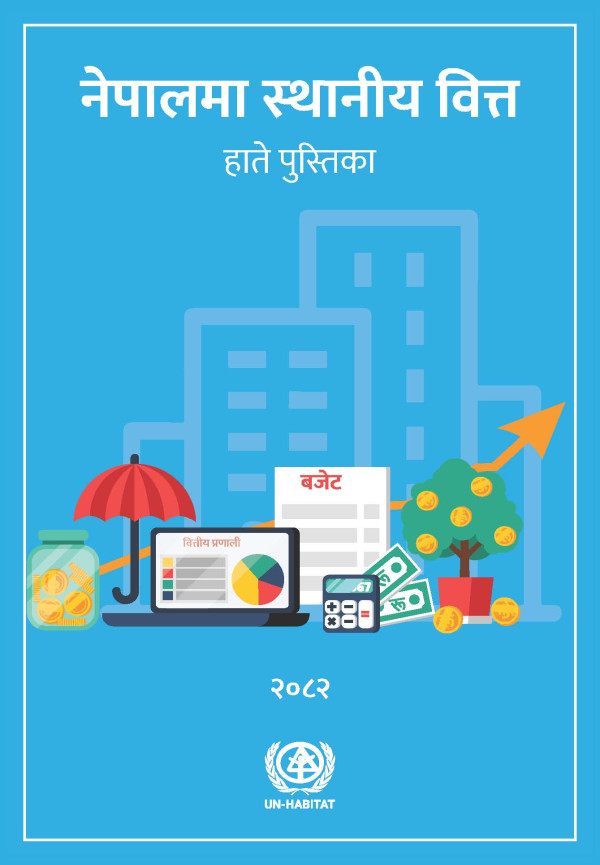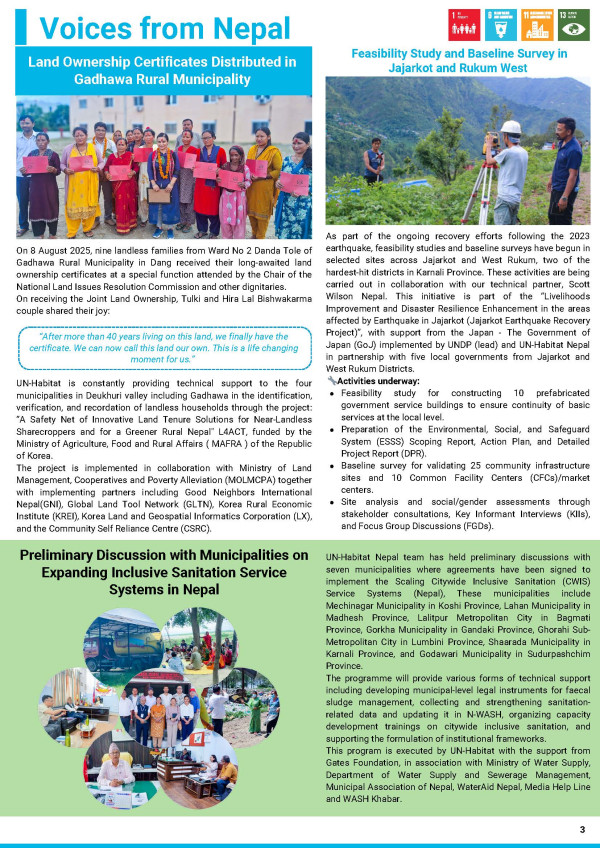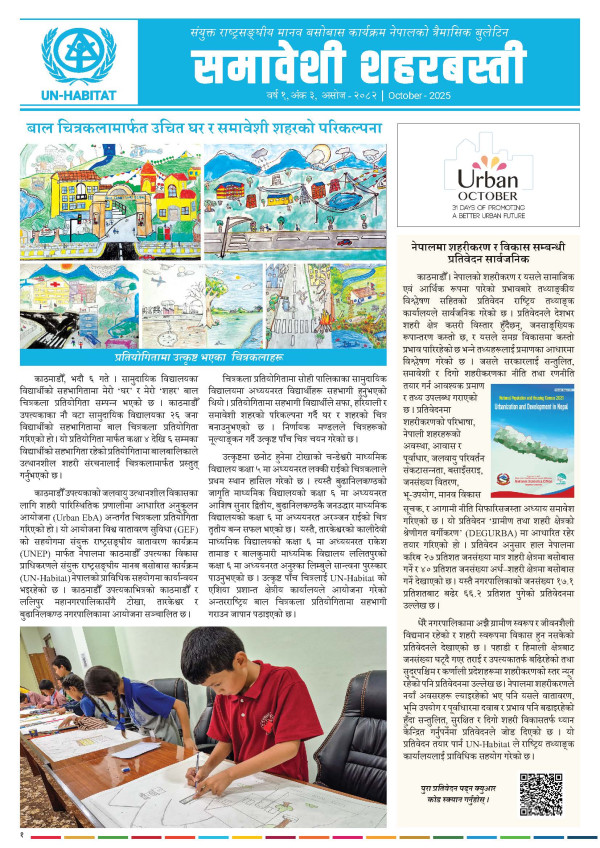Empowerment of local bodies must in achieving the national sanitation target

The approval of the much-awaited Sanitation and Hygiene Master Plan (2011-2017) by the government earlier this month is an encouraging move towards materializing the national target of universal access to toilet by 2017. It is believed that the formulation of the Sanitation and Hygiene Master Plan will help to expedite the pace of sanitation promotion and demonstrate the country’s commitment in its sanitation endeavors. During all the earlier South Asian Conferences on Sanitation organized time and again, Nepal had showed firm commitment to develop the Sanitation and Hygiene Master Plan and help the concerned stakeholders in effective planning, budgeting, human resource mobilization, implementation, monitoring and evaluation and follow up of the ongoing hygiene and sanitation programmes and projects in the country. According to experts, though there is a gradual achievements and improvement in the sanitation and hygiene sector in past two decades, however, still around 57 percent population across country lacks access to a toilet. This means, despite the simulation of Open Defecation Free (ODF) areas, public awareness and capacity development activities of concerned stakeholders, partners and local communities, increase in funding by the government and partners, there is still a big challenge in achieving the perceived health benefits from water supply and sanitation facilities. During 1990s, only six percent population across the country had sanitation coverage (access to toilet) while the government’s data in 2009 states a total of 43 percent population across the country has access to a toilet till date. The annual growth rate of sanitation increment thus stands at 1.9 percent.Meanwhile, the toilet coverage in urban areas is 78 percent against the rural coverage of only 37 percent. It proves that that there is a big disparity between urban and rural sanitation, although urban areas have other urban specific problems of solid and liquid waste. Interestingly, urban toilet coverage has stagnated at around 80 percent since 2000 and the trend analysis shows that if the present trend is continued, the toilet coverage will be only 80 percent against the national target of universal coverage in 2017. Meanwhile the statistics of Department of Water Supply and Sewerage (DWSS) in 2009 stated out of the total five development regions of the country, the far and mid western regions have the least sanitation coverage with only about 30 percent whereas, western development region has the highest sanitation coverage with about 53 percent of the respective total regional population.As the above mentioned figure suggests, there is still a need of pragmatic vision, strengthened institutional arrangements and adequate resources and collaboration among the stakeholders to meet both MDG and national sanitation targets. Meanwhile, for the effective implementation of the Master Plan including speeding up programmes and activities envisioned by the plan, the launch of Global Sanitation Fund in October 2010 is considered to play a vital role in the country. More importantly, both, Master Plan and GSF envision the important role of local government bodies to provide water and sanitation facilities throughout the country. In the recent years, the local government bodies namely District Development Committees (DDCs), Village Development Committees (VDCs) and municipalities have recognised the initiation of promotional actions on sanitation to achieve Open Defecation Free initiative through their annual planning. As mentioned in both Master Plan and GSF, each local body’s role in sanitation promotion, particularly in achieving ODF status in various communities should be integrated appropriately and a participatory approach should be taken in achieving success in overall status of sanitation and hygiene. According to Dinesh Raj Manandhar, project manager of the GSF, the programme is moving in a progressive way. The process of selecting sub-grantees for the implementation of the programme in five different districts namely Bajura, Bardiya, Argakanchi, Sindhupalchowk and Sunsari and five municipalities namely Tikapur, Gulariya, Dharan, Itahari and Inaruwa is undergoing and soon the name of the recipients will be announced. The programme targets a total population around 1,750,000. The major four components of the GSF are simulating Open Defecation Area (ODF), capacity development of stakeholders, implementation of Sanitation Master Plan and knowledge management, he added. Manandhar said as stated in the master plan, the role of local government bodies is well-defined and considered to mainstream to accelerate hygiene and sanitation development, which is also included as a major component in GSF. “Local bodies are part and parcel of sanitation framework and there is a need to define their role and empower them to strengthen different sanitation related campaigns and works. Most importantly, it is the local fund that will be important and sustainable in any community,” he added. The GSF programme aims to achieve total sanitation coverage in its five target districts using Community Led Total Sanitation, School Led Total Sanitation and sanitation marketing approaches. “As a part of the GSF programme, we will provide software resources like trainings and knowledge management workshops, resource pooling arrangement and sharing to benefit the communities with needed knowledge and awareness in basic sanitation and hygiene practices including construction of toilets. “Though there is favorable environment in promoting sanitation and hygiene facilities in the country, there is still a challenge of coordination among the stakeholders at different levels to work in this sector,” said Manandhar. At the same time, the political instability and lack of leadership due to failure of the government to nominate officials in local administration also are considered major challenges to meet the MDG and national target of sanitation in the country. Our efforts in addressing these issues until today look very different from what is necessary. The problems we face today are multidimensional--- environmental, geological, health and other hazards to worry for. Whether or not the water pipelines to our homes are running seems immaterial if we consider the further consequences that our unplanned behaviour poses before us. Waiting without substantial efforts might turn out to be a headlong charge into disaster. If we fail to wake up today,tomorrow may never provide us a chance. Article by: Pragati Shahi, Reporter, The Kathmandu Post E-mail: pragati.journo@gmail.com





